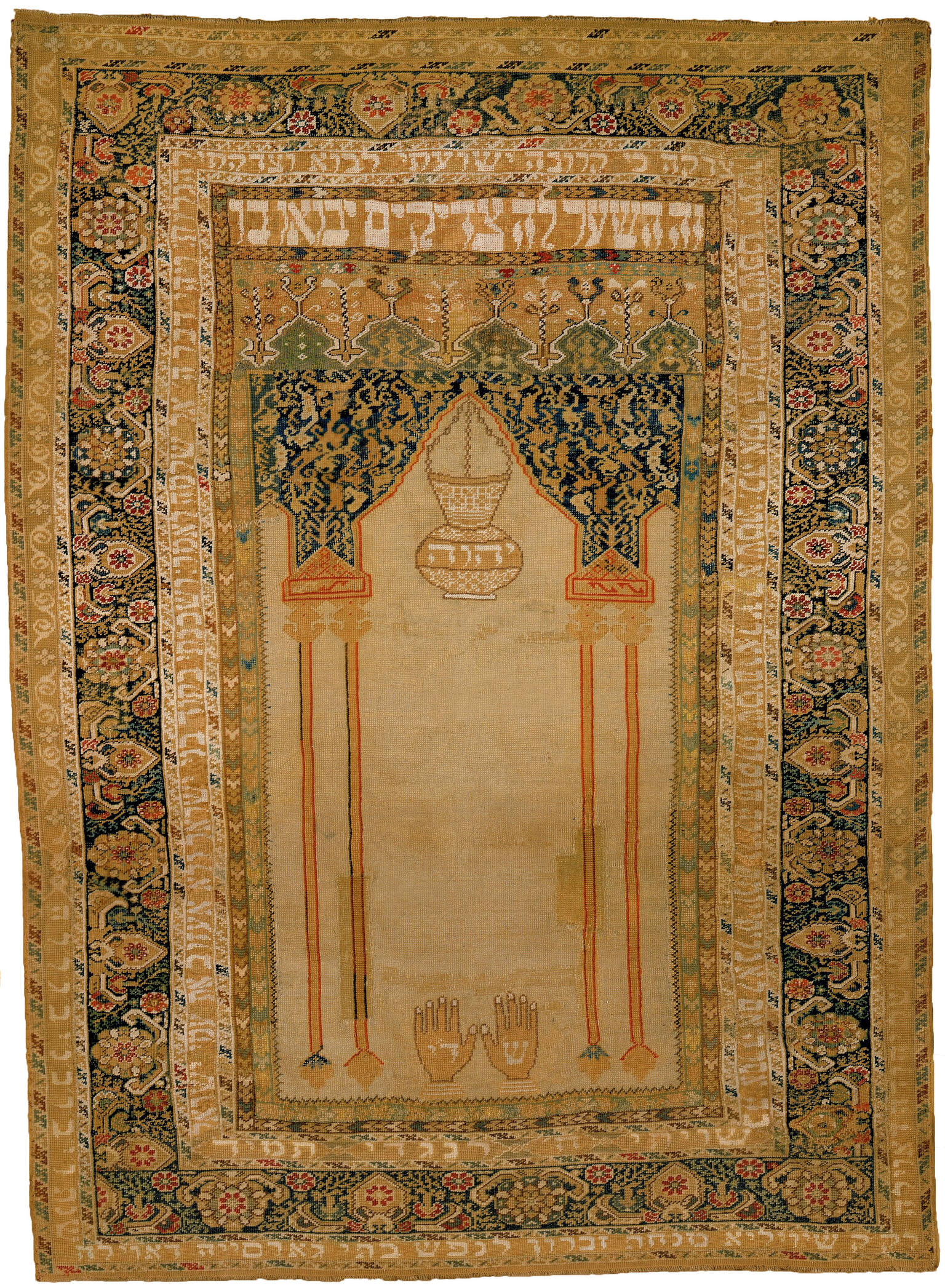Torah Ark Curtain (Gördes)
Artist Unknown
Late 18th–Early 19th Century
This Torah ark curtain from Gördes, Turkey, features an archway flanked on either side with double columns and a hanging lamp, a motif common to both Islamic prayer rugs and mats and Ottoman Torah ark curtains. One theory is that the design was brought to the Ottoman Empire by Jewish weavers fleeing Spain in the fifteenth century. In Islamic iconography, the lamp symbolizes God’s radiance. For Jews, the lamp represents the “eternal light” suspended in front of the Torah ark in synagogues.
Credits
The Jewish Museum, New York. Gift of Dr. Harry G. Friedman.
Published in: The Posen Library of Jewish Culture and Civilization, vol. 6.
You may also like
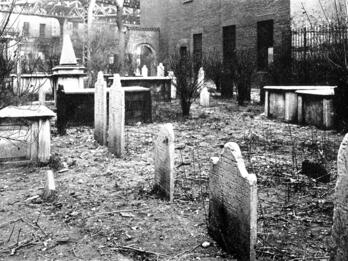
Chatham Square Cemetery
Among the graves in the burial ground of Congregation Shearith Israel, in New York City (the oldest Jewish cemetery in the United States) is that of Cantor Gershom Mendes Seixas (1745–1816), the first…
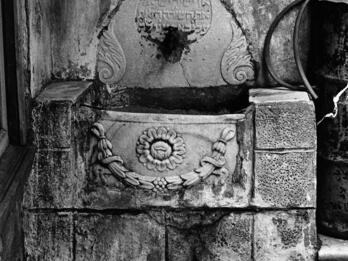
Hand-Washing Basin
Before the priestly blessing is recited in the synagogue, those making the blessing ritually wash their hands. It is also customary for Jews to wash their hands before entering a synagogue for worship…
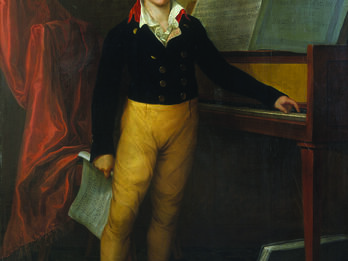
Portrait of Giacomo Meyerbeer as a Boy
A pathbreaking composer, Giacomo Meyerbeer (1791–1864) surprised and delighted generations of opera fans in Europe and around the world. To the staid formula of live performances, he added sound…
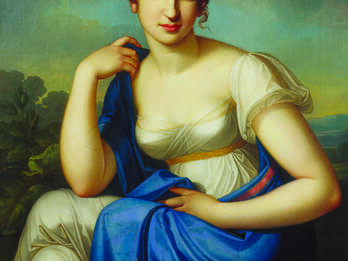
Portrait of Amalie Beer
The daughter of the wealthiest Jew (Liepmann Meyer Wulff) in Berlin at the turn of the century and married to a wealthy sugar refiner (Jacob Herz Beer), Amalie (Malka) Beer (1767–1854) was a…
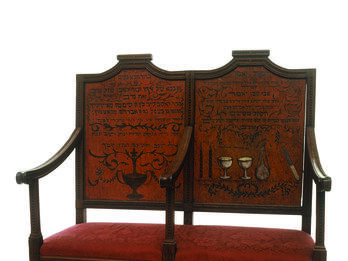
Circumcision Bench
In Ashkenazic communities, circumcision benches with two seats were sometimes used from the nineteenth century on, one for the sandek, the godfather on whose lap the baby boy is circumcised, and one…

Medal in Honor of the Grand Sanhedrin of Napoleon
Engravers Alexis Joseph Depaulis and Augustin Dupré collaborated on this remarkable Napoleonic-era medal that honored the Grand Sanhedrin, a representative body of seventy-one rabbis and Jewish…
Engage with this Source
Related Guide
Material Culture and Modernity
1750–1880
Discover the many types of objects—furnishings and clothing, jewels and medals, wares—crafted by Jews or specifically for use by Jews.
You may also like

Chatham Square Cemetery
Among the graves in the burial ground of Congregation Shearith Israel, in New York City (the oldest Jewish cemetery in the United States) is that of Cantor Gershom Mendes Seixas (1745–1816), the first…

Hand-Washing Basin
Before the priestly blessing is recited in the synagogue, those making the blessing ritually wash their hands. It is also customary for Jews to wash their hands before entering a synagogue for worship…

Portrait of Giacomo Meyerbeer as a Boy
A pathbreaking composer, Giacomo Meyerbeer (1791–1864) surprised and delighted generations of opera fans in Europe and around the world. To the staid formula of live performances, he added sound…

Portrait of Amalie Beer
The daughter of the wealthiest Jew (Liepmann Meyer Wulff) in Berlin at the turn of the century and married to a wealthy sugar refiner (Jacob Herz Beer), Amalie (Malka) Beer (1767–1854) was a…

Circumcision Bench
In Ashkenazic communities, circumcision benches with two seats were sometimes used from the nineteenth century on, one for the sandek, the godfather on whose lap the baby boy is circumcised, and one…

Medal in Honor of the Grand Sanhedrin of Napoleon
Engravers Alexis Joseph Depaulis and Augustin Dupré collaborated on this remarkable Napoleonic-era medal that honored the Grand Sanhedrin, a representative body of seventy-one rabbis and Jewish…


